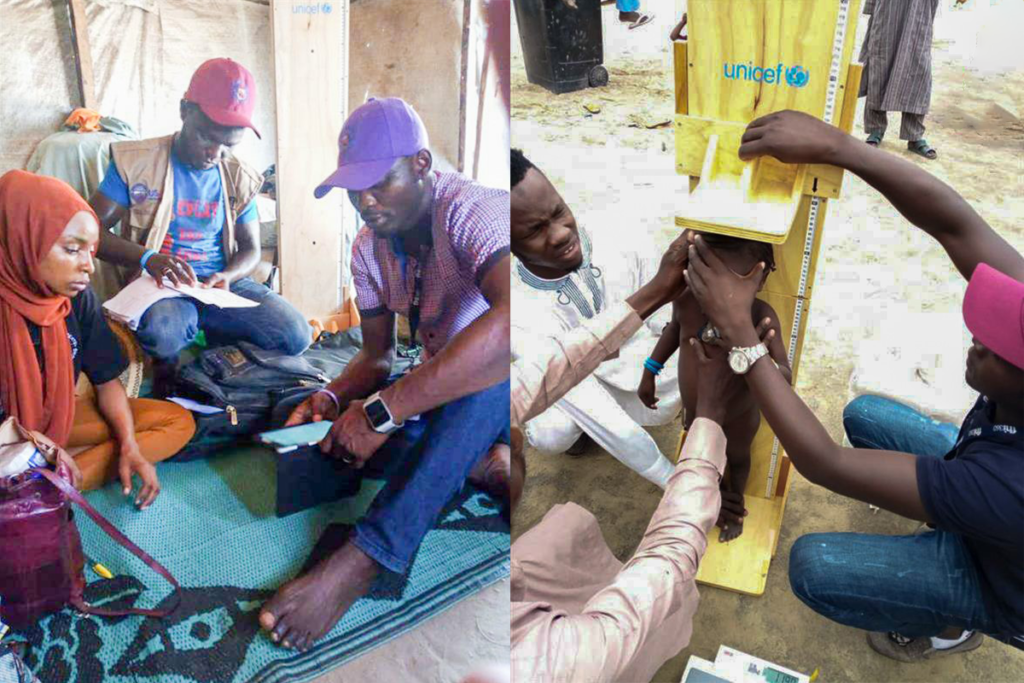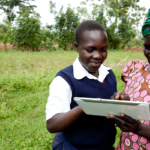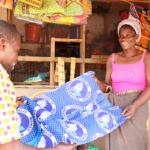By: Halima Oji and Aisha Nuraini
Internally displaced persons (IDPs) living in camps and among host communities face limited access to basic social services like health care, protection, WASH services and food security. Millions of IDPs currently face unprecedented levels of malnutrition and food insecurity due to the Boko Haram insurgency in Northeast Nigeria.
We work in FHI 360’s multisectoral Integrated Humanitarian Assistance to Northeast Nigeria II (IHANN II) project, which provides essential social services for IDPs, returnees and host communities to reduce morbidity and mortality in four local government areas of Borno state. In order to best target and select project activities and services, we used the SMART survey methodology to gather baseline information on the nutritional status and mortality rates of children under-five years, as well as the general population, at the state level. In this post, we describe the survey methodology and how it provided high-quality data to inform decision making. You can read our full survey findings here.
What is the SMART methodology?
The Standardized Monitoring and Assessment of Relief and Transitions (SMART) methodology is a simplified standard field survey used to collect real-time nutrition data during emergencies to establish an evidence base for host governments and humanitarian organizations for decision making. It is a decades-old interagency initiative that draws from multiple methodologies to assess the magnitude and severity of a humanitarian crisis.
The SMART methodology has several key innovations, such as plausibility checks to verify data quality and flag problems; flexibility in sample size calculation and cluster sizes; and standardized survey protocols that utilize the use of replacement clusters, household selection techniques and best field practices. As mentioned above, it is based on two public health indicators: the nutritional status of children under-five and the mortality rate of the population.
Our survey in Borno state
Prior to field data collection, the survey team trained for four days on anthropometric measurements, sampling of households, data collection tools, digital data collection and data quality checks. Thirty of us partook in the training, which included a standardization exercise and field test in selected IDP camps within the Borno state capital. The exercise provided the opportunity to test our data collection methods, verify when the entered data was wrong and provide feedback to finalize the steps and standardized tools.
Subsequently, we developed a field data collection checklist to avoid leaving out items required for field data collection including android tablets installed with the Kobo collection application, height boards, weighing scale, maternal and child mid-upper arm circumference (MUAC) strips and all backup forms.
At the field locations, we applied a two-stage cluster sampling design. The full report describes our sampling frame.
What using SMART methodology looks like
Our first point of contact in the field was the community leader or camp manager depending on the type of settlement. They were duly informed of our activities and purpose and in most cases provided community guides to accompany the teams.
A typical day in the field began as early as 5 a.m. Briefing commenced an hour or less later during which teams agreed on clusters to visit, discussed the previous day’s challenges, calibrated equipment and conducted plausibility checks before dispersing to the various sites for the day’s activity. The teams and community guides visited the selected households where at least 30 minutes was spent completing the exercise – questioning and measurements. We manually entered data into our Kobo collection application which was pre-programmed to minimize errors and improve quality.
Our biggest challenge was getting children to stay calm for the measurements and convincing households that the survey was only meant to gather information and not a registration for distribution of relief items. We were not deterred by the blazing sun and sometimes heavy downpours! We trekked long distances to cover and exceed daily targets.
The first few days of data collection were slow and marked by some challenges but, as they say, practice makes perfect. Our planned interactions with community members and support from community leaders eventually paid off. We also applied a strategy that allowed us to standardize our equipment early in the morning at the base while waiting for security clearance. Additionally, we took measurements of older children who were calmer to ease the uneasiness of the younger children.
Our findings and recommendations
Our analysis revealed medium- to high-prevalence of acute malnutrition and high levels of stunting among children under-five years. Stunting occurs when there is inadequate nutrition and repeated bouts of infection over a long period. (The report provides detailed statistics of our findings.) As such, our survey findings allow us to recommend strengthening the monitoring of the nutrition situation of under-fives and mothers. We also recommend scaling up community-based management of acute malnutrition activities at facility- and community-levels, as well as integrating health and nutrition activities in the continuum of infant and young children feeding activities.
Photo credit: Solomon Atuman/FHI 360



